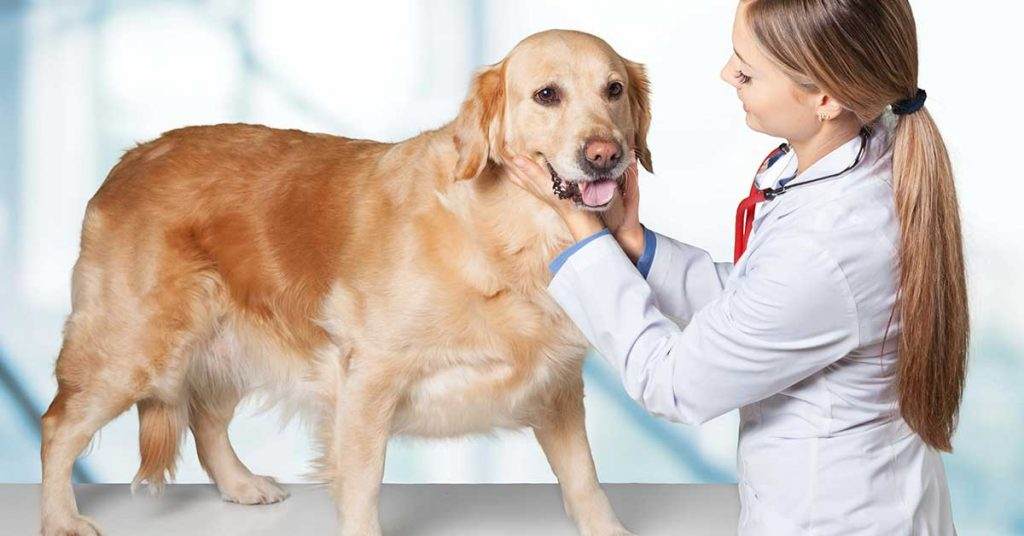Ever heard about the fable of a frog in boiling water?
The story follows the premise that if you take a frog and throw it in a pot of boiling water, the frog jumps out straight away. However, if you take the same frog and place it in a pot of tepid water that’s boiling slowly, the frog will NOT perceive the looming danger that it’s exposed to.
And even as the water heats up, the frog will NOT make any effort to jump out of the pot and save his life. He’ll, therefore, be boiled alive and die.
The frog, in this case, is both your dog and you. You’re the person responsible for your dog’s life and health. The water summarizes all the risks and health hazards the dog is exposed to.
Ignorance is bliss, but where your dog’s life is involved it isn’t. The more knowledgeable you’re about your dog and the risk he’s involved in, the more you’ll be able to protect him.
By now you probably know about the importance of vaccinating your dog or the importance of serving him with heartwarming medication. But there’s something more crucial. Something of utmost importance and which could mean the difference between keeping your beloved pooch alive or watch him suffer his way to death.
This statement is made in reference to Cushing’s disease, one of the most ignored dog diseases. This is a common disease among aging dogs, which is extremely hard to detect and it’s all because the symptoms are closely linked to a broad range of different ailments.
What’s Cushing’s Disease?
When your dog starts acting weird then that’s a dead giveaway that there’s something wrong with him.
For instance, when he starts peeing so often or starts drinking more water than he’s supposed to, then that could be interpreted to mean there’s something abnormal about him. For all we know, he could be suffering from a kidney disease or diabetes. But there’s another common concern that still ties up to the same symptoms — and that’s the Cushing’s disease.
Also referred to as hyperadrenocorticism, Cushing’s disease is named after a human neurosurgeon called Harvey Cushing, who first described it.
It’s a common disease among aging dogs, and it’s known for affecting adrenal glands, the two small glands found at the front of each one of the two kidneys.
Normally, these glands are tasked with the role of producing a series of crucial hormones that are supposed to be regulating different body functions. An epic example of such a hormone is cortisol.
General Overview of the Disease
However, once a dog is diagnosed with Cushing, what happens is that these glands start producing too much of these hormones, thus throwing your dog’s body out of balance — and when this happens, something real bad follows.
First, your dog will be urinating excessively while concurrently drinking insane amounts of water.
Worse is that the disease can only get worse from there. Your dog will proceed to lose a hefty amount of body muscle, grow weak, as the skin thins and the dog loses hair on the flanks, perineum, and neck.
Other accompanying signs of the disease include excessive panting, pot-bellied appearance, and increased hunger to name a few.
Cortisol
Think of cortisol as your dog’s natural steroids. An adequate amount of cortisol is also required by the body to help it adapt to stressful situations. Plus it’s what the body needs to maintain proper body weight, skin condition, tissue structures, and good health on the overall.
While too much of it is meant to strengthen the immune system, it actually does the stark opposite. It weakens the immune system, thus leaving the dog’s body exposed to a wide range of dog infections and diseases.

Types of the Cushing’s Disease
Cushing’s disease can be broadly classified into two: the adrenal dependent type and the pituitary-dependent type.
Pituitary-dependent type of Cushing’s disease is the most common of the two types, covering 80 to 85 percent of all the cases associated with the disease. Mostly, this type of Cushing’s disease occurs when there’s a tumor growth in the pituitary, the pea-sized gland found at the base of your dog’s brain.
For what’s worth, the pituitary is responsible for producing a number of hormones including the adrenocorticotropic hormone (ACTH). However, when infected with a tumor, the glad overproduces ACTH, which will be traveling from your bloodstream to adrenal glands thus stimulating them to ramp up the production of the cortisol hormone.
The remaining 15 to 20 percent of all the cases leading to the Cushing’s disease in dogs is adrenal-dependent. In this case, a tumor grows in either one or both of your dog’s adrenal glands, triggering it to produce excessive amounts of cortisol.
The Important of Understanding the Type of the Cushing’s disease Your Dog is Suffering from
Before you even think of subjecting your dog to any form of treatment, your vet will first have to find out what type of Cushing’s disease your dog is suffering from. They need this information to figure out the most appropriate kind of treatment to prescribe to the dog.
So to diagnose your dog for the disease and differentiate the two types of diseases, your veterinarian will have to run a series of blood tests to the dog. At some point, the may be forced to use an ultrasound to find out if the tumor is growing in the pituitary or adrenal gland.
Critical Warning Signs of Cushing’s Disease in Your Dog
Diagnosing your dog for Cushing’s disease can be a bit challenging when you think of it. As with any health condition you know, early detection and treatment are incredibly important.
That being said, here are some of the early warning signs of the Cushing’s disease to look for in your dog:
1) Excessive Thirst and Urination
The symptoms associated with Cushing’s disease kick in at a much lower and prolonged rate. Speaking of which, one of the first signs you’ll notice is your dog drinking huge amounts of water so frequently.
So expect to see you refilling your dog’s drinking bowl so often. Your dog will also be urinating so frequently. So expect the dog to want to go outside and take a whiz more frequently than what you’re used to.
Now when the two are combined, expect your dog to start having sudden accidents in your house once so often.
And since the disease is common in older dogs, it’s easier for you to confuse it for a urinary tract infection. Other people just chalk it up to senility, when the first prime suspect should be the Cushing’s disease.
Worth mentioned is that the increased thirst could be interpreted to mean the dog may be suffering from kidney disease. So you might want to pair the symptom with the symptoms listed below to put your mind to rest.
2) Overfeeding, Weight Gains, and Pot-bellied Appearance
A heightened level of cortisol in the body will definitely lead to your dog overfeeding, the result of which the dog will be adding some extra pounds and, maybe, develop a potbelly.
Did your dog pick a gluttonous habit all of a sudden? Is he eating random things he stumbles across, even when he didn’t have this behavior before?
Well, odds are good, the dog is suffering from Cushing’s disease, and that’s something worth checking into.
Also, cortisol has been found to cause the abdominal ligaments of dogs to relax, something that often leads to them developing a pot-bellied experience.
You could be wrong though, as this is the same symptom you’re dog is likely to show if he’s also suffering from arthritis. It’s for this reason that you might want to ask your doctor to run further diagnostics on your dog before you rush into making any meaningful conclusions.
For instance, your vet may have to feel the dog’s abdomen to establish if the liver is abnormally enlarged and hanging a bit lower than it’s naturally supposed to. Suffice it to say that it’s only your vet who can truly ascertain whether or NOT your dog is suffering from Cushing’s disease.
3) Excessive Panting
Excessive panting isn’t just normal in a dog. If your dog isn’t used to displaying this type of behavior then there could be something else.
Where your dog pants after engaging in strenuous physical activities or when stressed or when the environment they’re exposed to are super hot, then that’s perfectly normal.
However, if the painting appears to persist for far too long, and it just so happens that the dog has also been showing the other symptoms on the list, then that could come as a clear indication that the dog might be suffering from the Cushing’s.
4) Symmetrical Hair Loss
Any dog that’s been diagnosed with the Cushing’s will start losing a tremendous chunk of their fur. The hair loss problem will be more pronounced around the belly region of your dog, as the hair on the leg and head remains intact.
This is no ordinary hair loss, considering it will be occurring in some sort of pattern, where the dog loses similar amounts of hair on both sides of the belly.
This is a clear sign that you should actually be scared about your dog’s health because there’s a fair possibility the disease might have actually worsened.
5) A super-delicate thin Skin that’s Easy to Bruise
The Cushing’s doesn’t only weaken the immune system of your dog, it also weakens its skin by making it extra delicate to an extent that it’s possible to pinch it up and instead end up bruising the dog.
If you suspect your dog is suffering from the Cushing’s, just head to where he is and take a fold of the skin near his abdomen and pinch it. If the skin is too thin to fold and touch, as opposed to carrying the plumpness associated with healthy skin, then there’s a strong possibility your dog has the Cushing’s.
Bruises on the skin give it away further. In which case, you might want to carry the dog to a local vet for further diagnosis and treatment should he test positive.
6) Recurrence of Infections
Eye and ear infections will be more rampant in your dog if he happens to be dealing with Cushing’s disease.
This is a common sign if the Cushing’s is at the worsening stages and a clear call that you should actually act fast to save the dog’s life.
7) A Sudden Change in Behavior
Your dog will suddenly start acting weird when the Cushing’s kicks in. For instance, you can expect the dog to be more aggressive, fidgety, and impulsive as opposed to what you’re used to dealing with while around him.
In other words, your dog will be far from the calm and reserved pooch you were all fond off, to a dog that lives like he’s resentful to everyone who dares approach him.
The behavioral change could signal a long host of other problems, as well. But when it’s paired up with any other sign on the list, then consider taking it to a vet for a Cushing’s diagnose and an early treatment where appropriate.
Confusion with Other Health Conditions
The Cushing’s is NOT the only health condition that your dog has to deal with as he age. Other health complications are just as likely to take advantage of your dog’s vulnerability and weakness.
Worth mentioning is that it’s extremely difficult to diagnose your dog for Cushing’s if the only thing you’re relying on is the signs and symptoms. Further checks and a thorough diagnostic test has to be run by an experienced vet for a go-ahead.
That said, here’s a list of disease and ailments that are often confused with the Cushing’s:
- Urinary inconsistency is a common problem among dogs in their old age. While they could come as a result of the Cushing’s, most of the time it’s just the dog suffering from a urinary infection.
- A bloated belly doesn’t necessarily mean that your dog has the Cushing’s. Most of the time, your dog will be bloating from a gastric dilation or gastric torsion, especially when you’ve never made any attempt to treat the problem.
- Symmetrical hair loss is another common problem among dogs that don’t necessarily link your dog to the Cushing’s. For all we know, your dog might as well be suffering from hypothyroidism.
- Excessive thirst could also mean your dog is suffering from diabetes. So don’t pin the symptom entirely to the Cushing’s unless you have completely ruled out the possibility of the dog being diabetic.
The point is to make an effort to talk to your vet about the Cushing’s and your suspicions before you can go ahead and react to it. Symptoms only hint towards something, but they’re NO clear indications that something could actually be the case.
Examples of Breeds that more Exposed to the Cushing’s
Cushing’s isn’t a common condition among dogs. Only a limited number of dogs have been reported to actually suffer from it.
However, the problem has been found to be more ramp in certain breeds of dogs compared to others — and here’s a list of dog breeds that have been found to be genetically more predisposed to have the Cushing’s:
- Terriers, and by that we mean all types of terriers including the Yorkies, Silkies, Boston Terriers, and the Bull Terriers to name a few.
- Dachshund
- Poodles
- America Eskimo Dogs
- All the Spitz breeds
Diagnosing the Cushing’s
Every time you subject your pooch to a blood test, remember to ask for the test results from your vet. You may be surprised to find out that your dog’s liver enzymes have been elevated for a year or two, or even more, in a row.
Your vet won’t necessarily mention it unless you ask them to. This is particularly the case when the symptoms aren’t exactly life-threatening. So your vet decides NOT to address the issue until the condition gets fatal, making it hard for you to treat it.
It’s for this reason that you’re advised to get a copy of the blood test from your vet and analyze it on your own. Your vet should be helping you while at it by making you understand the health implications of any incomprehensible value in the test copy.
An experienced vet will offer to partner with you in identifying if your dog is exposed to the Cushing’s or if he’s completely safe. If the report indicates the ALP value of your dog has been elevated, ask the veterinarian if this actually marks the onset of Cushing’s disease.
The actual diagnosis of Cushing’s disease isn’t as an easy process. Neither is it a sure one. A series of blood tests, followed by a low-dose dexamethasone suppression test has to be carried out to diagnose the condition.
Read this bearing in mind that both of these tests will be demanding for two separate draws of blood before results are drawn. During the tests, the underlying vet will be trying to compare cortisol levels in your dog for a more definitive diagnosis of the disease.

Treatment Options for a Dog with Cushing’s
Your vet may describe a few drugs for treating Cushing’s disease in your dog. You’re however reminded that most of the available drugs have undesirable side effects that you may want to discuss with your vet first before agreeing to any form of treatment.
You can start by doing your own thorough research and finding out if you’re really comfortable with some of the side effects before you can go ahead and agree to treat your dog.
This is an issue of great concern considering some of the side effects are far worse than the symptoms itself. They’re also costly and may require that you closely monitor your dog’s blood-work to ensure he’s completely safe.
To avoid all this, you’re strongly advised to work more closely with your vet to avoid causing any serious harm to your furry companion. You should also read this article from FDA before meeting a vet.
I highly recommend you to go through this playlist on Cushing’s disease
References
- https://academic.oup.com/endo/article-abstract/147/9/4438/2528350
- https://www.karger.com/Article/Abstract/178058
Table of Contents





